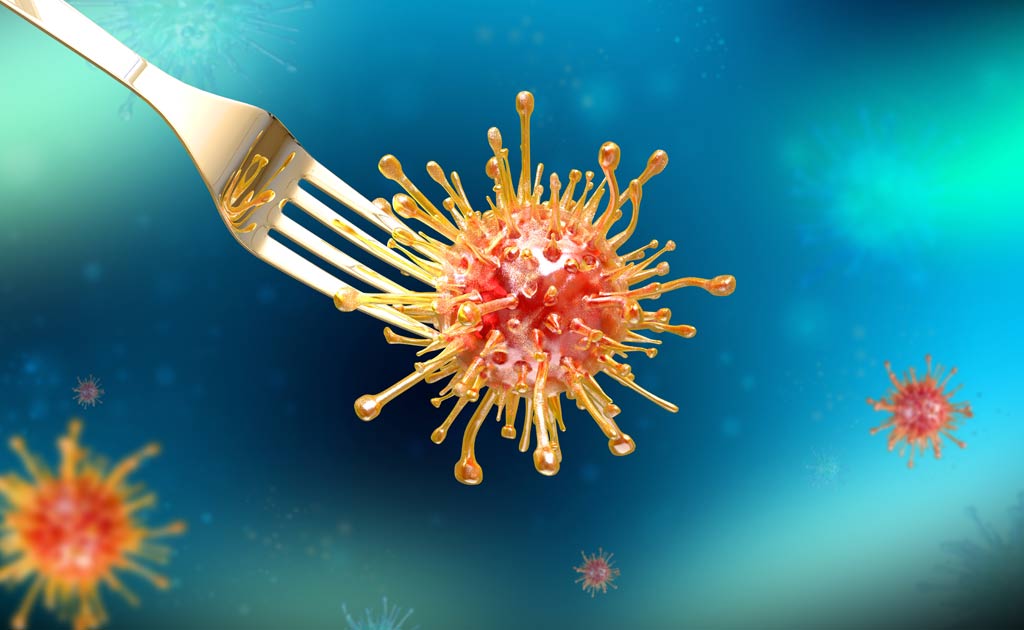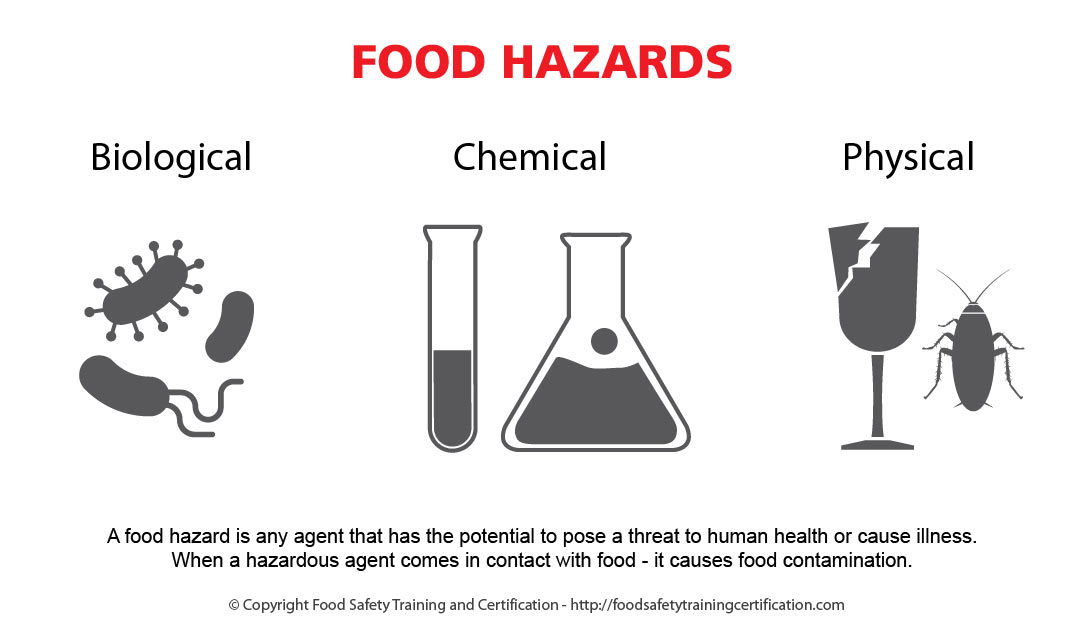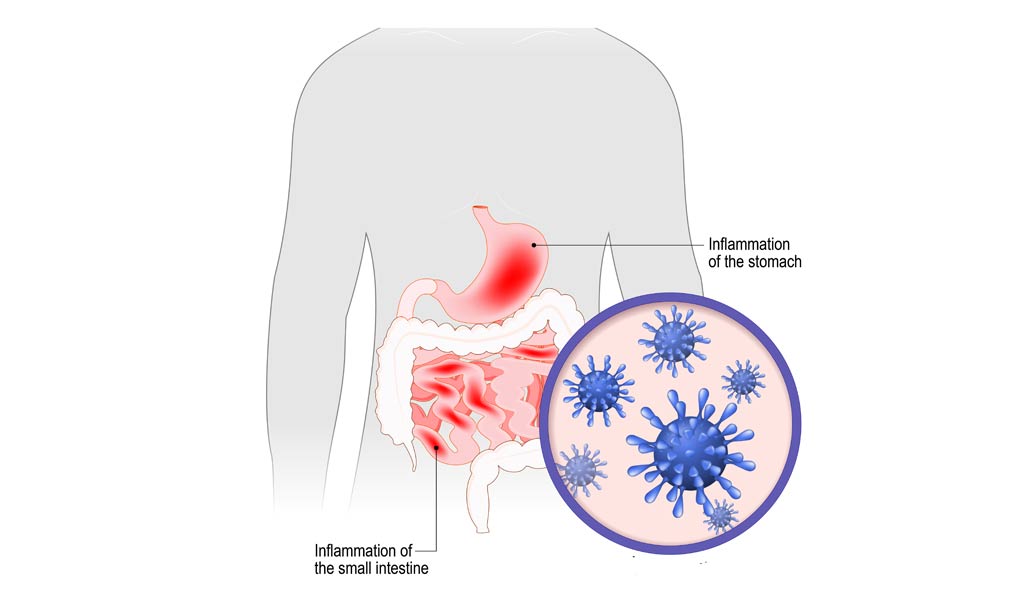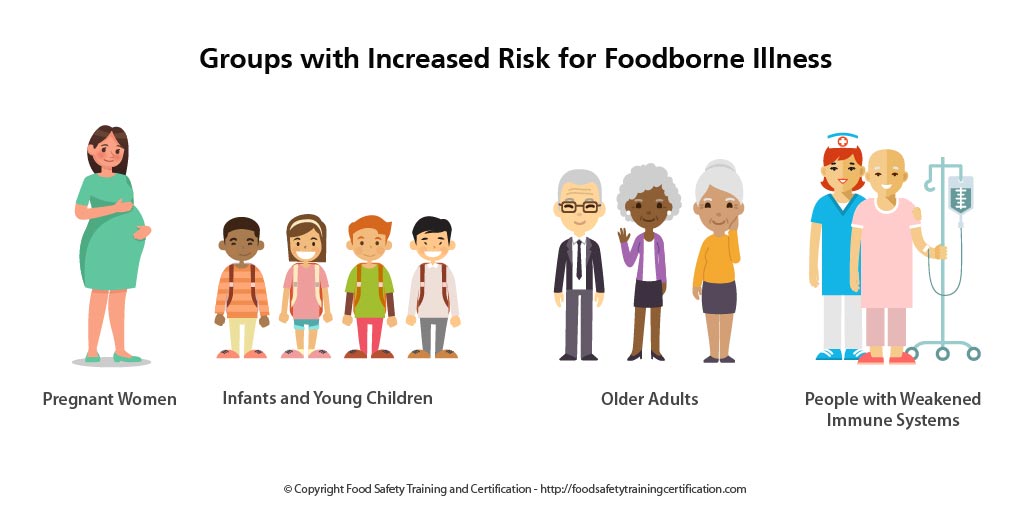Foodborne illness (also called foodborne disease and informally referred to as food poisoning) refers to human sickness or disease caused by consuming food or beverages contaminated with harmful biological, chemical, or physical hazards.
The CDC estimates that each year 48 million people get sick from a foodborne illness, 128,000 are hospitalized, and 3,000 die.



Researchers have identified more than 250 causes of foodborne illness. Most of them are infections, caused by a variety of bacteria, viruses, and parasites. Harmful toxins and chemicals also can contaminate foods and cause foodborne illness.
To prevent foodborne illness, it is necessary to understand how food becomes unsafe to eat and what proactive measures can be taken to keep food safe.
- Learn about proper hygiene, cross contamination, cold and hot food safety, foodborne pathogens, and best practices to prevent foodborne illness.
- Food Manager Training & ANSI Certification - $99.00
- Food Handler Training - only $7.00!
- HACCP Training: 16hr/4hr/1hr
- Food Allergy Training - $15.00
- Enter Promo "train10off" at Checkout
Types of Foodborne Illness
Foodborne illnesses can be categorized by the type of illness:
- Infection: A foodborne infection is caused by eating food contaminated pathogenic (harmful) microorganisms – such as bacteria, parasites, or viruses – which invade and multiply in the intestinal tract or other tissues – and cause illness. Bacteria causing infections include Salmonellosis and Listerosis. Viruses include Hepatitis A, and norovirus. Parasites include Trichinella and Anisakis.
- Intoxication: Foodborne intoxication is caused by consuming food containing either poisonous chemicals or toxins produced by microorganisms in the food. Poisonous chemicals causing illness are substances such as cleaning compounds, sanitizers, pesticides, and heavy metals. Examples of toxin producing bacteria include Clostridium botulinum, Staphylococcus aureus, and Clostridium perfringens. Toxins are also the natural part of some plants and mushrooms. Seafood toxins include ciguatera and scombroid.
- Toxin-mediated infection: Foodborne toxin-mediated infections are the result of eating food containing harmful microorganisms which produce toxins while in the intestinal tract. Viruses and parasites do not cause toxin-mediated infections. Bacteria such as Shigella and Shiga toxin-producing E. coli cause toxin-mediated infections.



Types of Food Contamination
Food contamination refers to food that has been defiled by a harmful microorganism, toxin, substance, or object. Contamination of food can happen at any point of production: growing, harvesting, processing, storing, shipping or preparing – and can be caused by a variety of factors including: environmental, agricultural, industrial, infected food handling personnel, or the improper holding times/temperatures in the handling, preparing, and storing of food.
Because food becomes hazardous by contamination, food contaminants are also referred to as food hazards. A hazard is any source of potential damage, harm, or adverse health effects on something or someone.
The types of food contamination and the associated food contaminants (hazards) are:
- Biological Contamination
Biological contamination includes food contaminants (hazards) such as: bacteria, viruses, and parasites. Bacteria and viruses are responsible for most foodborne illnesses and are the biggest threat to food safety. - Chemical Contamination
Chemical contamination includes food contaminants (hazards) such as: natural toxins (algae, fungi, molds, plants, allergens) and chemical contaminants (pesticides, industrial chemicals, cleaning and sanitizing agents, food additives, drugs, and other toxins).- Allergenic Hazards: Food allergens are a sub-category of natural toxins within chemical hazards. Some people are sensitive to certain proteins in foods. The 8 major food allergens include: milk, eggs, fish, crustacean shellfish (lobster, crab, shrimp), wheat, soy, peanuts, and tree nuts.
- Physical Contamination
Physical contamination includes food contaminants (hazards) such as: foreign objects which include glass, metal, plastic, bone chips, hair, insects, pest droppings, and other undesirable particles or objects.



Foodborne Illness Symptoms
Symptoms of foodborne illnesses depend on the cause or type of agent. Most foodborne illnesses, while unpleasant, go away by themselves and don’t have lasting effects.
Biological Foodborne Infection Symptoms
The most common result of biological foodborne infections is gastroenteritis. Gastroenteritis, also called the “stomach flu”, is the inflammation of the gastrointestinal tract – the stomach and small intestine.
Symptoms of gastroenteritis include abdominal pain, vomiting, diarrhea, headache, fever, and chills. The onset of symptoms can last from a few hours to several days. Most people recover with no treatment.
Chemical Foodborne Infection Symptoms
Different from biological hazards, which last for a short period of time, the long-term effects of food chemical toxins can be extremely serious and life-threatening.
Harmful chemicals may disrupt body metabolism, cause cancers, damage genes, alter organ functions, affect reproduction, and development. Aflatoxins, for example, can increase the risk of liver cancers – and mercury contamination can affect developing brains in fetuses, infants and children for a lifetime.



At Risk/Vulnerable Groups
Anyone who eats contaminated food can become sick. However, there are certain groups of people who have a higher risk for contracting a foodborne illness – and have a greater severity of an illness. These groups include:
- Pregnant women;
- Infants and young children;
- Older adults;
- People with weakened immune systems from medical conditions, such as diabetes, liver disease, kidney disease, organ transplants, or HIV/AIDS.
- People taking certain kinds of medications for medical conditions – or receiving chemotherapy or radiation treatment.
Vulnerable people are not only at increased risk of contracting a foodborne illness, but are also more likely to have a lengthier illness, undergo hospitalization, or even die.
If you or someone you care for is in one of these groups, it’s especially important to take steps to prevent food illness and to know which foods are more associated with illness than others.



Summary
To prevent foodborne illness, it is necessary to understand how food becomes unsafe to eat and what proactive measures can be taken to keep food safe.
References
Foodsafety.gov. Food Poisoning. Retrieved July 7, 2019, from
https://www.foodsafety.gov/food-poisoning
Centers for Disease Control and Prevention (CDC). Food Safety. Retrieved June 10, 2019, from
https://www.cdc.gov/foodsafety/index.html
Wikipedia contributors. (2019, July 11). Food safety. In Wikipedia, The Free Encyclopedia. Retrieved May 2, 2019, from
https://en.wikipedia.org/w/index.php?title=Food_safety&oldid=905750574
HealthyPeople.gov – Food Safety. Retrieved May 1, 2019, from
https://www.healthypeople.gov/2020/topics-objectives/topic/food-safety






